To capture sharp shots with your mobile camera, master your device's autofocus system. Use touch-to-focus techniques to control focus points, and experiment with continuous focus for moving subjects. In low light, tap bright areas or use external lighting to assist focusing. For artistic shots, utilize depth of field control and portrait mode. When photographing action, anticipate movement and use burst mode combined with continuous autofocus. Don't forget to explore focus peaking features for precision in macro shots. For ultra-sharp landscapes, try focus stacking by capturing multiple images at different focus points. These pro tips will elevate your mobile photography game, but there's even more to discover.
Understanding Smartphone Autofocus Systems
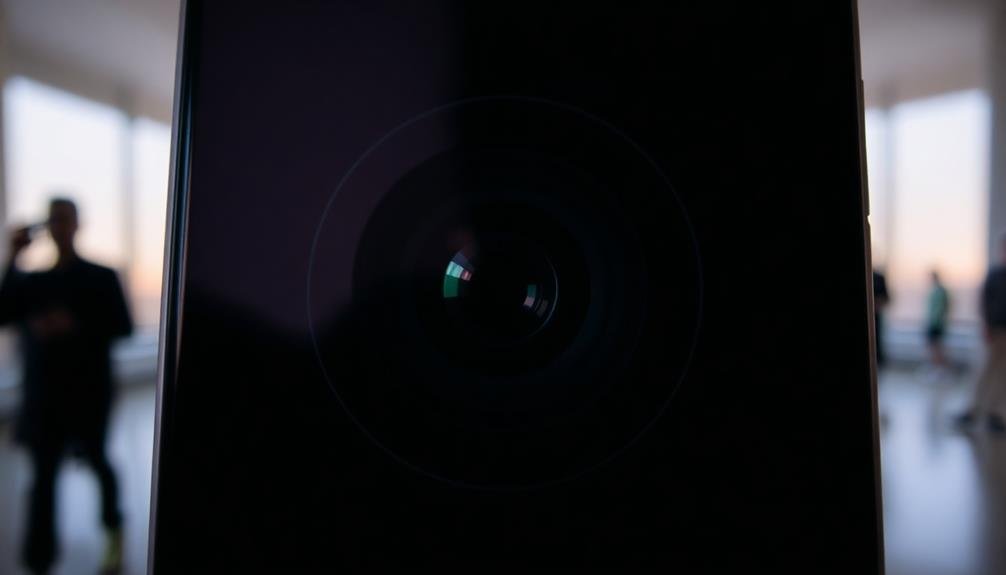
In modern smartphones, autofocus systems play an essential role in capturing sharp images. These systems use sophisticated technology to quickly and accurately focus on your subject. Most smartphones employ either phase detection autofocus (PDAF) or contrast detection autofocus (CDAF), with some high-end models featuring a hybrid of both.
PDAF works by comparing light patterns from opposite sides of the lens, allowing for faster focusing. It's particularly effective for moving subjects.
CDAF, on the other hand, analyzes the contrast in the image and adjusts the focus until it reaches maximum contrast. While slower, it's often more precise in low-light conditions.
You'll also find features like continuous autofocus, which tracks moving subjects, and touch-to-focus, allowing you to select your focal point by tapping the screen. Some phones offer AI-powered focus, which can identify and prioritize faces or specific objects.
Understanding your phone's autofocus capabilities helps you make the most of its features. Experiment with different focus modes and settings to see which works best for various shooting scenarios.
Mastering Touch-to-Focus Techniques

Touch-to-focus is a powerful feature that puts you in control of your smartphone's camera focus.
You'll want to master locking focus for stable shots, especially when your subject isn't moving.
It's also essential to understand the difference between single and continuous focus modes, as they'll affect how your camera behaves after you've tapped to focus.
Lock Focus for Stability
With touch-to-focus technology, you've got a powerful tool at your fingertips. But to take your mobile photography to the next level, you'll want to master focus locking. This technique guarantees your subject remains sharp, even if you or your subject moves slightly after focusing.
To lock focus on most smartphones, simply tap and hold on your desired focal point until you see a confirmation (often a pulsing square or circle). Once locked, you can recompose your shot without losing focus. This is especially useful for off-center subjects or when shooting through foreground elements.
Here's a quick guide to focus locking in different scenarios:
| Scenario | When to Use | Benefits |
|---|---|---|
| Portraits | Before subject moves | Maintains facial sharpness |
| Action Shots | Just before key moment | Freezes motion in focus |
| Landscapes | On distant object | Guarantees depth of field |
Single vs. Continuous Focus
Understanding the difference between single and continuous focus modes is essential for capturing sharp images in various situations.
Single focus, also known as AF-S, locks onto a subject when you tap the screen and maintains that focus until you take the shot. It's ideal for stationary subjects or when you want to compose your image after focusing.
Continuous focus, or AF-C, constantly adjusts focus as your subject moves. This mode is perfect for action shots, moving subjects, or when you're panning. To use it effectively, keep your subject within the focus area as you shoot.
To master touch-to-focus techniques, practice tapping different areas of the screen to see how it affects your image. For single focus, tap on your main subject to guarantee sharpness. In continuous mode, tap and hold on a moving subject to track it.
Remember that lighting conditions can affect focus performance. In low light, your camera may struggle to focus, so try tapping on areas with more contrast.
Experiment with both modes in various scenarios to understand when each is most effective for your shooting style.
Utilizing Focus Peaking Features
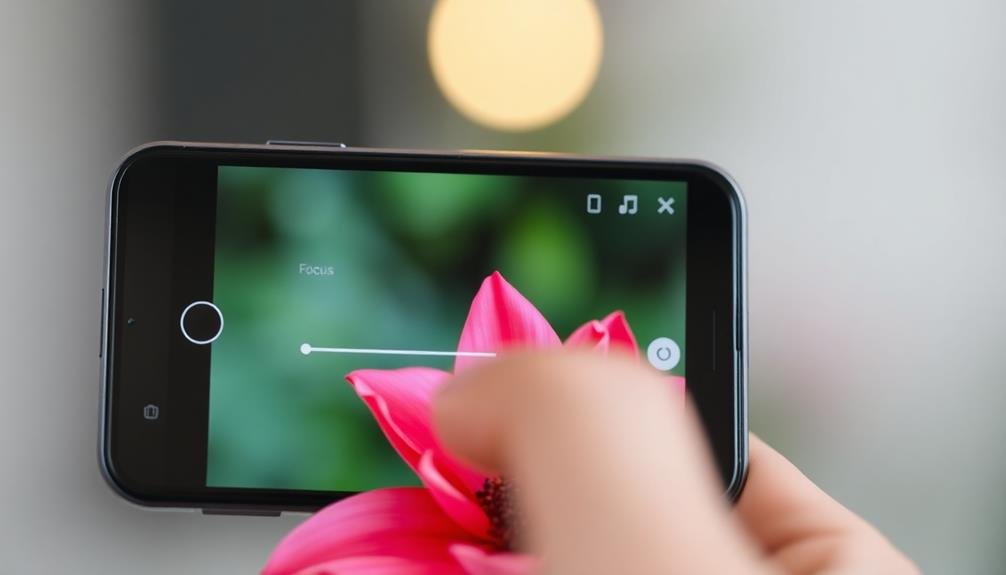
While not available on all smartphones, focus peaking is a powerful tool that can greatly improve your mobile photography. This feature highlights the areas of your image that are in sharp focus, typically by displaying colored outlines around the focused edges. To use focus peaking, you'll need to enable it in your camera app's settings, if available.
When composing your shot, pay attention to the highlighted areas. They'll show you exactly which parts of the image are in focus, allowing you to make quick adjustments. This is especially useful for macro photography or when shooting subjects with intricate details.
You can fine-tune your focus by tapping different areas of the screen or using manual focus controls, if your device offers them. Experiment with different focus peaking colors to find what works best for your eyes and the scenes you're capturing.
Some apps let you adjust the intensity of the peaking effect, which can be helpful in various lighting conditions. Remember that focus peaking is a tool to assist you, not a guarantee of perfect focus. Always review your shots and zoom in to verify critical areas are sharp.
Leveraging Depth of Field Control
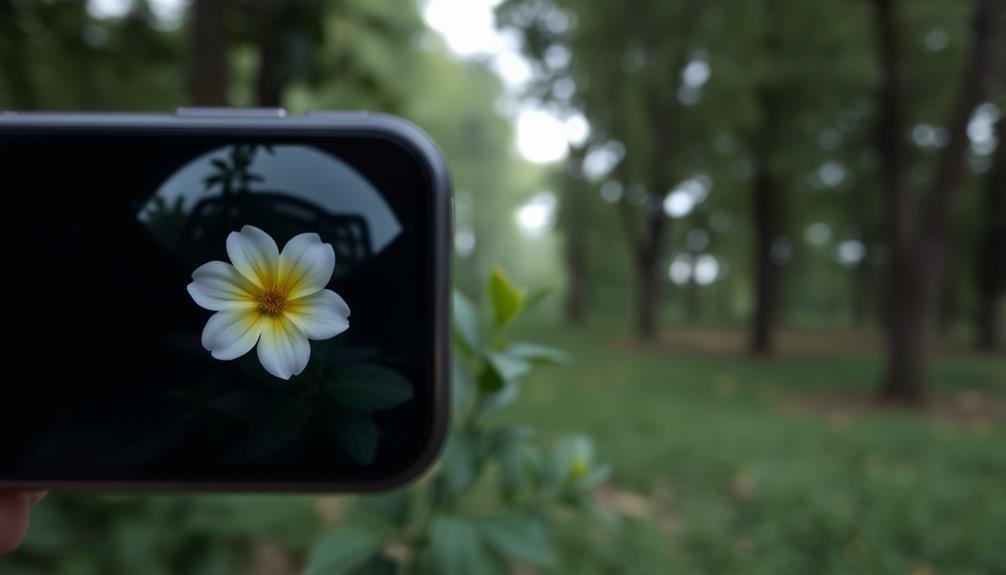
Depth of field control elevates your mobile photography from simple snapshots to artistic compositions. You can create stunning visual effects by manipulating the area of sharpness in your images. Most modern smartphones offer portrait mode or aperture adjustment features, allowing you to blur backgrounds and highlight subjects.
To leverage depth of field control effectively:
- Experiment with different f-stop values
- Use portrait mode for people and objects
- Pay attention to subject distance
- Utilize foreground elements for depth
- Try macro mode for close-up shots
Here's a quick reference guide for depth of field effects:
| F-stop | Subject Distance | Background Blur | Best For |
|---|---|---|---|
| f/1.8 | Close | Strong | Portraits |
| f/2.8 | Medium | Moderate | Street |
| f/5.6 | Far | Minimal | Landscape |
| f/8 | Various | Balanced | General |
| f/16 | Any | Minimal | Group shots |
Overcoming Low-Light Focus Challenges
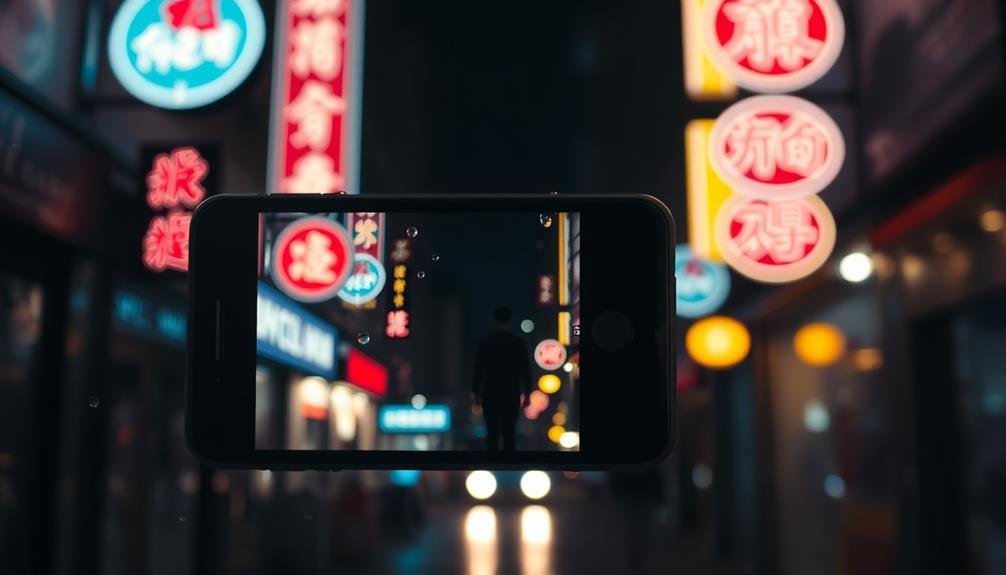
Low-light environments present some of the toughest challenges for mobile camera focus. When shooting in dim conditions, your phone's autofocus system struggles to detect contrast and edge details, often resulting in blurry or out-of-focus images.
To overcome this, try tapping on the brightest area of your composition to help the camera find a focus point. If that doesn't work, use your phone's flashlight or an external light source to temporarily illuminate the scene, allowing the camera to focus before you take the shot.
Another effective technique is to switch to manual focus mode if your camera app offers this feature. This lets you fine-tune the focus yourself, bypassing the autofocus system's limitations.
Additionally, consider using HDR mode, which can help balance exposure in tricky lighting situations. If your phone has a night mode or specialized low-light shooting mode, enable it for better results in dark environments.
Capturing Moving Subjects Effectively

When capturing moving subjects with your mobile camera, you'll need to stay one step ahead.
Anticipate your subject's movement and position yourself accordingly to frame the shot.
Utilize your camera's continuous autofocus mode, if available, to keep your subject sharp as it moves through the frame.
Anticipate Subject Movement
In spite of mobile cameras' advanced autofocus systems, capturing moving subjects can still be challenging. To overcome this, you'll need to anticipate your subject's movement. Start by observing your subject's pattern of motion and predicting where they'll be in the next moment. This foresight allows you to frame your shot and focus in advance, increasing your chances of a sharp image.
When photographing athletes or animals, study their typical behaviors and movements. For instance, if you're shooting a soccer game, position yourself where the action is likely to occur and pre-focus on that spot. With wildlife, learn their habits to anticipate when and where they might appear.
Use your phone's burst mode to capture a series of rapid-fire shots, increasing the likelihood of getting a perfectly focused image. Some mobile cameras offer AI-powered subject tracking, which can help maintain focus on moving targets. Enable this feature if available.
Practice panning techniques by following your subject's movement with your camera. This creates a sharp subject against a blurred background, emphasizing motion.
Remember to keep your elbows tucked in for stability and use a smooth, continuous motion as you pan.
Continuous Autofocus Modes
Once enabled, tap on your moving subject to lock focus. The camera will then track and refocus on that subject as it moves within the frame. This is particularly useful for sports, wildlife, or active children.
For best results, keep your subject within the center of the frame, where most cameras have their most accurate focus points.
Remember that continuous autofocus can drain your battery faster, so use it judiciously. Some advanced camera apps offer customizable sensitivity settings for continuous autofocus. Experiment with these to find the right balance between responsiveness and stability for your shooting style.
If your subject is moving unpredictably, consider using burst mode in conjunction with continuous autofocus to increase your chances of capturing the perfect moment in sharp focus.
Advanced Focus Stacking Techniques
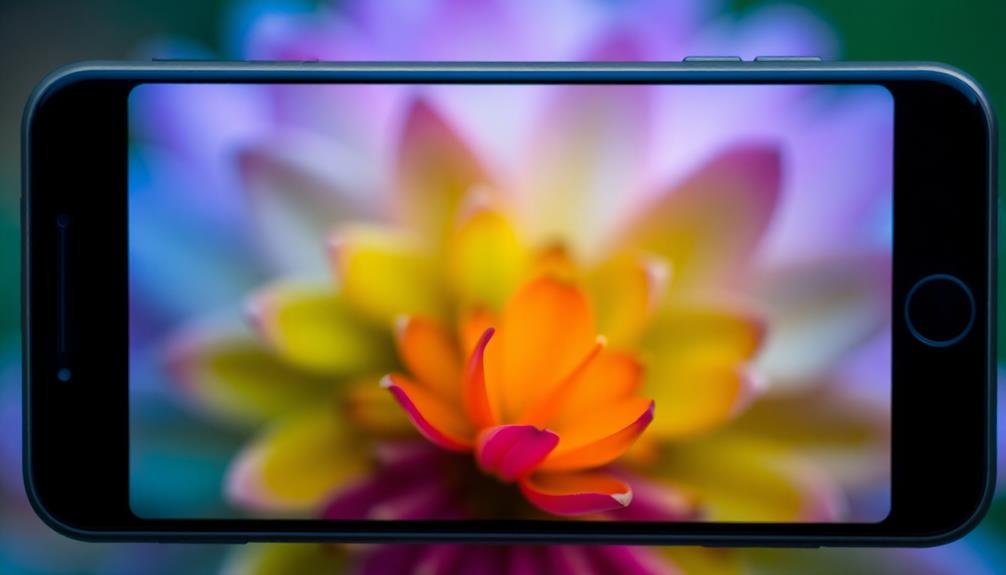
Focus stacking, a powerful technique for mobile photographers, takes your macro and landscape shots to the next level. It involves capturing multiple images at different focus points and combining them to create a single photo with enhanced depth of field.
To start, you'll need a tripod or stable surface for your phone and a focus stacking app.
Begin by selecting your composition and setting your camera to manual focus mode. Take a series of shots, adjusting the focus slightly between each one. Start with the closest element and work your way to the farthest. Aim for about 15-20 images, depending on the scene's complexity.
Once you've captured your images, use your chosen app to align and blend them. The software will analyze each photo, selecting the sharpest areas from each to create a final composite. Pay attention to any artifacts or misalignments in the result, as you may need to manually adjust these.
For best results, shoot in RAW format and use consistent exposure settings across all images. Practice with simple subjects before attempting more complex scenes.
With patience and practice, you'll master this technique and produce stunningly sharp, detailed photos.
Frequently Asked Questions
How Do I Clean My Smartphone Camera Lens for Better Focus?
To clean your smartphone camera lens, you'll need a microfiber cloth. Gently wipe the lens in circular motions to remove smudges and dirt. Don't use harsh chemicals or abrasive materials. For stubborn grime, use a slightly damp cloth.
Can External Lenses Affect My Phone's Autofocus Capabilities?
Yes, external lenses can affect your phone's autofocus. They may interfere with the built-in lens system, causing focusing issues. You'll often need to manually focus or use your phone's native camera app without the external lens for ideal autofocus performance.
What's the Best Focusing Technique for Macro Photography on Smartphones?
For macro photography on smartphones, you'll want to tap the screen to set focus, then slowly move closer until your subject's sharp. Don't get too close or you'll lose focus. Use manual focus if available.
How Does Optical Image Stabilization Impact Focus in Smartphone Cameras?
Optical image stabilization helps you maintain focus by reducing camera shake. It'll keep your subject sharper, especially in low light or when zooming. You'll notice improved clarity and fewer blurry shots when using OIS-equipped smartphone cameras.
Are There Apps That Can Enhance My Smartphone's Focusing Abilities?
Yes, you'll find several apps that can improve your smartphone's focusing capabilities. They offer manual focus controls, focus peaking, and advanced autofocus algorithms. Try apps like Camera+ 2, ProCam, or FiLMiC Pro for enhanced focusing options.
In Summary
You've now got the tools to take your smartphone photography to the next level. By mastering focus techniques, you'll capture sharper, more professional-looking images. Remember, practice makes perfect. Don't be afraid to experiment with different focus methods and settings. Whether you're shooting landscapes, portraits, or action shots, these tips will help you nail the focus every time. So grab your phone, get out there, and start shooting like a pro!

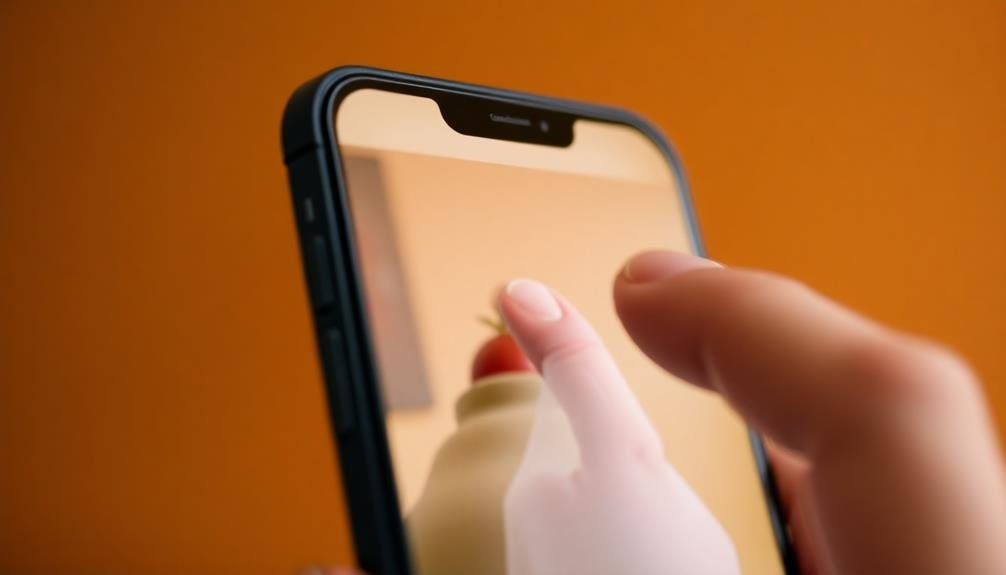



Leave a Reply